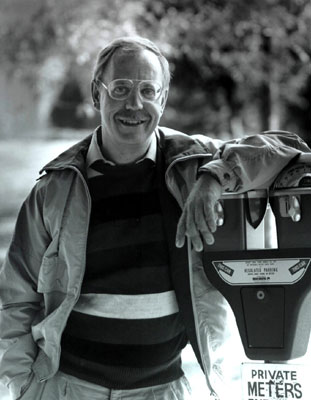Biography
 Joseph
Hubbard was born in Illinois in 1945 and acquired Canadian citizenship in
1974. The artist obtained an M.A., B.F.A. and a B.A in art history from the
University of Illinois. He has taught at secondary & tertiary levels in
the US and Canada. Hubbard was seconded by the Ontario Government as an advisor
on provincial art curricula and served as artists' representative on the Board
of Directors of Museum London. He has worked as president of Canadian Artists
Representation (C.A.R.) at the Forest City Gallery, London (Canada).
Joseph
Hubbard was born in Illinois in 1945 and acquired Canadian citizenship in
1974. The artist obtained an M.A., B.F.A. and a B.A in art history from the
University of Illinois. He has taught at secondary & tertiary levels in
the US and Canada. Hubbard was seconded by the Ontario Government as an advisor
on provincial art curricula and served as artists' representative on the Board
of Directors of Museum London. He has worked as president of Canadian Artists
Representation (C.A.R.) at the Forest City Gallery, London (Canada).
The artist's
practice utilizes extremely diverse mixed media technologies. These include
metals, fiberglass, wood, ceramics, photography, plastics, vacuum forming,
photography video, and bricolage, or found technological detritus.
These
darkly humoured, acerbic cultural insights are influenced by diverse expressions
in non-western cultures. Over three decades Joseph Hubbard has revisited the
same dozen themes in series, gradually refining each successive interpretation.
But the consistent subject of the work is social criticism and re-examination
of our contemporary values.
Artist's Statement
 The
work frequently engages opposites: banality and sophistication, comedy and
tragedy, surface realism and abstraction. These complexities, although arcane,
do not render the work impenetrable. The realism that has at least one obvious
interpretation is largely a hook to engage the viewer. Wit or black humour
is intended to produce nervous laughter, which I regard as a kind of entropic
verbalization, as valid as analytical insight. The work is often part of a
continuing series, which are explored over a period of several years. The
meanings are multi-layered from the obvious to the ambiguous. In works from
The Elephant Is the Room, the process of art-making itself, including "collaborations
with dead artists" and museum "interventions", archiving and
exhibiting, became the subjects.
The
work frequently engages opposites: banality and sophistication, comedy and
tragedy, surface realism and abstraction. These complexities, although arcane,
do not render the work impenetrable. The realism that has at least one obvious
interpretation is largely a hook to engage the viewer. Wit or black humour
is intended to produce nervous laughter, which I regard as a kind of entropic
verbalization, as valid as analytical insight. The work is often part of a
continuing series, which are explored over a period of several years. The
meanings are multi-layered from the obvious to the ambiguous. In works from
The Elephant Is the Room, the process of art-making itself, including "collaborations
with dead artists" and museum "interventions", archiving and
exhibiting, became the subjects.
Craftsmanship
in the work is not intended to be a technical tour-de- force but rather to
build on ambiguities suggested by the media themselves. The irony is that
the mimicry possible in different materials actually subverts reality. Some
pieces use lights and/or sound as a "material" that satirizes by
appropriating and stylizing only a snippet of experience. Objects are recreated
in unexpected materials as a way of challenging perceptions about the role
of the art object, and the existence of the source object. (re: museum track
light dimmers cast in bronze) These works often occupy relatively small, intimate
spaces in which they can be contemplated closely. In spite of all the concerns
present in the work, I see no reason that the work cannot function simultaneously
as visual poetry with an elegant, if yet critical and disturbing presence.
Artists who have influenced me or whom I admire include Marcel Duchamp, Joseph Beuys, Bruce Nauman, Ed Ruscha, Wm. T. Wylie,H. C. Westermann, Wym Delvoye, Robert Gober, and Dieter Roth.
Photo credit: John Tamblyn